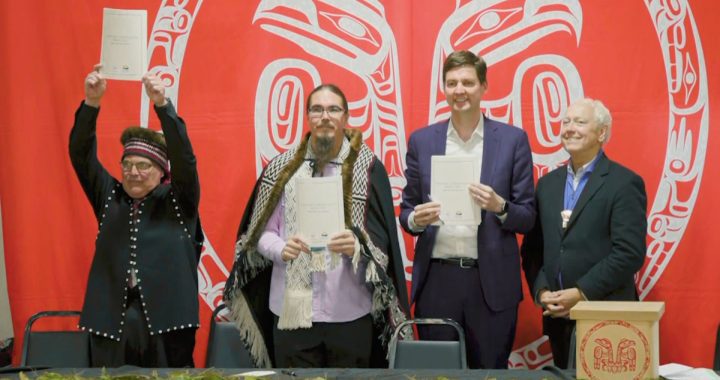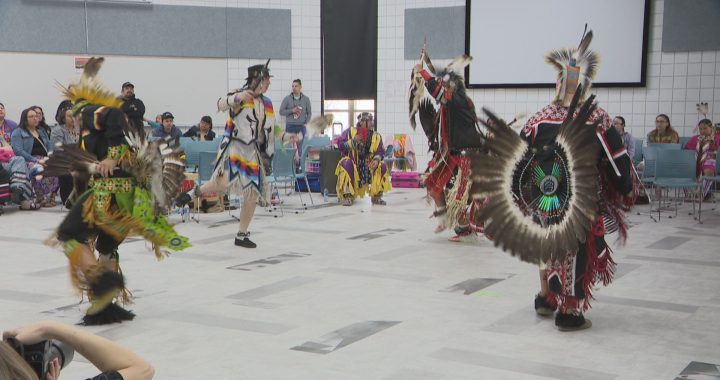By Kenneth Jackson and Cullen Crozier
APTN Investigates
Just before Christmas the principal owners of Wasaya Airways received a letter.
They were warned Wasaya was about to be grounded by a mountain of debt, according to a letter obtained by APTN Investigates in an on-going investigation into the First Nation-owned airway.
The letter was written by the chair of Wasaya’s board of directors to the chiefs of the 11 other First Nations that share ownership of Wasaya.
“Unless we are able to substantially reduce the amount owed to (Wasaya) Airways by our ownership First Nations, as represented by you, within the next month, (Wasaya) Airways is in danger of collapsing,” wrote Chief Bart Meekis on Dec. 16.
Meekis confronted the ownership First Nations, telling the chiefs they had racked up more than $2.6 million in debt to Wasaya as of Dec. 13. Meekis is also an ownership chief, representing Sandy Lake First Nation.
Together, they were more than $1 million over their credit limit.
A closure wouldn’t just affect them but the many other First Nations that depend on them, Meekis said.
“The impact of this would be catastrophic, not only for you and for your community, but also for the other First Nations and businesses within each community, as no other airway will be willing and able to offer the level of service that we currently provide,” he said, adding that he appreciated that government funds were slow coming in to each First Nation, possibly affecting their ability to pay on time.
It was just a couple months ago when Meekis raised the alarm in the letter.
Wasaya hasn’t gone under and continues to operate.
APTN has learned that to do this, Wasaya had to either sell assets or is in the process of selling assets.
When questioned by APTN, Meekis said the company had to make changes.
“We’re restructuring,” he said during an interview. “There are some businesses that Wasaya had that were eating away at the financials, so right now what’s happening is we’re letting go of some of those side businesses that Wasaya had that’s not making money. It’s just drawing money out from the business.”
He didn’t say what those businesses were but according to their website Wasaya owns Wasaya Prop Shop that claims to be a worldwide leader in aircraft repair. The website also lists a fueling company.
Wasaya flew over 100,000 passengers in 2012.
Wasaya President Tom Morris at first offered this week to speak to APTN face-to-face, but later declined via a letter.
In his letter, Morris wrote: “Wasaya Airways LP is a private company and is accountable to the First Nations who are its owners. Wasaya Airways will not comment publicly on any internal matters. ”
It’s not clear if the mounting debt has been cleared but it was beginning to interfere with day-to-day business as creditors refused to loan anymore money to Wasaya until they paid up, according to Meekis’ letter.
“We have already been refused further credit by some suppliers, pending clearing our outstanding accounts payable,” said Meekis in the Dec. 16 letter. “That is in itself a warning sign that we are in financial trouble.”
When asked why the ownership communities ran up the debt to the point of near collapse Meekis said it wasn’t just the owners but other communities that Wasaya provides services to.
“It’s not only the ownership communities it’s the other communities that run up the bill,” he said to APTN during a telephone interview.
But in his letter to the chiefs, Meekis said the other communities’ debt was considerably low in comparison to what he said ownership First Nations owed.
He mentioned, but didn’t name, 10 other First Nations owing just over $200,000.
Wasaya staff and chiefs have flown into the communities to try and get First Nations to pay up, Meekis told APTN. Chiefs were warned that Wasaya wouldn’t carry their debt any longer.
“So what’s happened is that the staff, and some of the chiefs, have visited the communities to try to, because it’s not a bank. Wasaya’s not a bank. To try to pay their bills because when you owe a bill you got to pay your bill,” he said.
According to further documents obtained by APTN and interviews with confidential sources, since Wayaya became 100 per cent First Nation owned in 1998, it’s unclear if ever only turned a profit besides one year and that was in 2009.
Meekis partially addressed that in his letter to the chiefs.
“We also know that the decisions not to pay your Wasaya account directly relates to your ownership shares in the company. In those communities where the First Nations’ accounts with Wasaya are way beyond their authorized limits, local stores are also way behind with their payments,” Meekis wrote.
When asked why Wasaya has rarely provided a yearly return to the communities Meekis said he didn’t know.
“I don’t know if I can give you that information right now because I don’t know,” he said.
Meekis called a different APTN reporter later the same night of his interview, demanding to know who provided us with a copy of his Dec. 16 letter to the chiefs.
The identity of the source was not disclosed.
During the phone interview, when Meekis was asked if Wasaya is going bankrupt, he replied that it wasn’t.
But in his letter, Meekis warned the chiefs that financial collapse was a very real possibility. He wrote that six First Nations in the ownership group were in “serious arrears.”
“Please be prepared to work with us, as we all stand to lose if Wasaya Airways fails,” he wrote.









